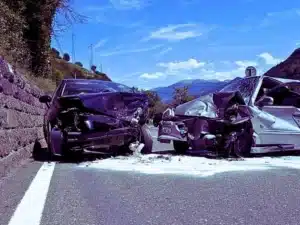Riding an ATV can be lots of fun, but it can also be very dangerous when the proper safety precautions are not taken. Accident victims suffer serious injuries that are often life-changing. Sadly, many victims lose their lives. About 92 percent of deaths involving ATVs are associated with unsafe practices and deadly decisions that could have been prevented.
What the Numbers Say About ATV Injuries, Deaths
According to the Consumer Product Safety Commission (CPSC) there were approximately 97,200 serious injuries involving all-terrain vehicles (ATVs) in 2015. About 28 percent of those injuries were to victims age 16 and under. On average, about 564 adults and 123 kids under 16 suffer ATV accident injuries so severe that they lose their lives every year in the United States. For children younger than 16, about 44 percent of fatalities are victims less than 12 years of age.
Types of ATV Injuries Suffered
A wide variety of injuries are experienced in ATV-related accidents, and some incidents result in multiple injuries. According to the CPSC, the majority of injuries treated in emergency departments across the U.S., about 28,300 or 29 percent, involved trauma to the head and neck. Additionally, approximately 28,100 affected one or both arms, 20,200 were to the torso, and about 19,600 involved one or both legs. The remaining 1,000 injuries affected other areas of the body.
ATV Precautions Prevent Injuries
By taking a few extra precautions and following these safety tips, riders can significantly reduce the risk of suffering serious injuries or death in an ATV crash.
Safety Gear is Essential
Taking a few extra minutes to do the right protective gear can mean the difference between life and death. Although complete protection from injuries is not possible, the following gear is recommended.
- Helmets: A helmet is quite possibly the most important piece of protective gear to ensure a safer ATV experience. Riders should make sure that their helmet is in good condition and free from damage, fits properly, and is certified by the U.S. Department of Transportation or the Snell Foundation.
- Eye Protection: Adequate eye protection can help riders see more clearly while keeping foreign objects from injuring the eyes. While regular sunglasses offer minimal protection, face shields and safety goggles are recommended.
- Adequate Clothing: The right type of clothing helps protect riders from injuries as well. Off-road style gloves offer extra padding to protect the hands, well-made, over-the-ankle boots with good traction provide a sturdier grip and protect the feet and ankles from injuries, and long-sleeves and pants provide protection against abrasions.
Pre-ride Inspections
Since they reduce the risk of becoming stranded or involved in an ATV crash, pre-ride inspections are worth the effort. While the vehicle owner’s manual can provide insight about equipment inspections for specific machines, the most common things to check out for most ATVs include things like tires and brakes, lights and switches, fluid levels and leaks, and handlebars.
Safe Riding Tips
Although following the right pre-ride precautions is important, operating an ATV in the safest manner possible is also effective for reducing the risk of accidents and injuries. For safer ATV operation, riders should:
- Avoid Paved Roads: Approximately 33 percent of ATV crashes that end in death occurs on paved surfaces. ATVs are designed for off-road use only and riding them on public roadways can result in collisions with other vehicles, overturning, and other dangerous incidents.
- Enroll in ATV Safety Training: Riders should opt for a course that offers hands-on training as well as education about ATV safety, local rules and regulations, and safe riding sites in the area.
- Select an Appropriate ATV: There is a wide variety of ATVs available on the market these days, and they come in numerous sizes, styles, and levels of power. Before hitting the trails, riders should make certain to select an ATV that is appropriate for their size, skill level, and usage needs. Younger children should never ride ATVs that are designed for adults.
- Never Allow More Riders Than the ATV was Designed For: Some ATVs are designed for additional passengers, but others were made to carry a driver only. And some single-rider ATVs have longer seats that can make the passenger capacity confusing. Riders should review their owners manuals for the recommended number of passengers and always abide by load capacity recommendations. When single-passenger ATVs carry additional riders they are at a higher risk for accidents and rollovers.
- Be Aware of Riding Terrain: The response of an ATV can be significantly impacted by factors like rough terrain, hills and down slopes and lose, muddy or bumpy ground. Riders should be aware of the type of terrain they are planning to ride and take extra precautions when necessary.
- Stay Informed: Since ATVs are sometimes discovered to have defective parts or dangerous designs, riders should stay updated on recalls and warnings from the CPSC.




